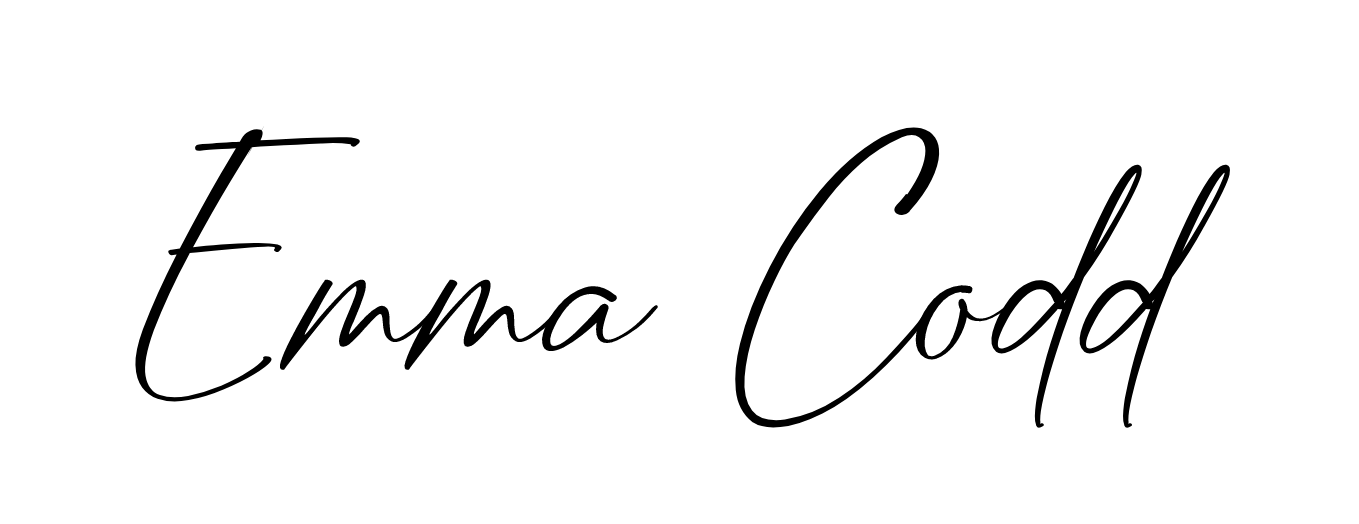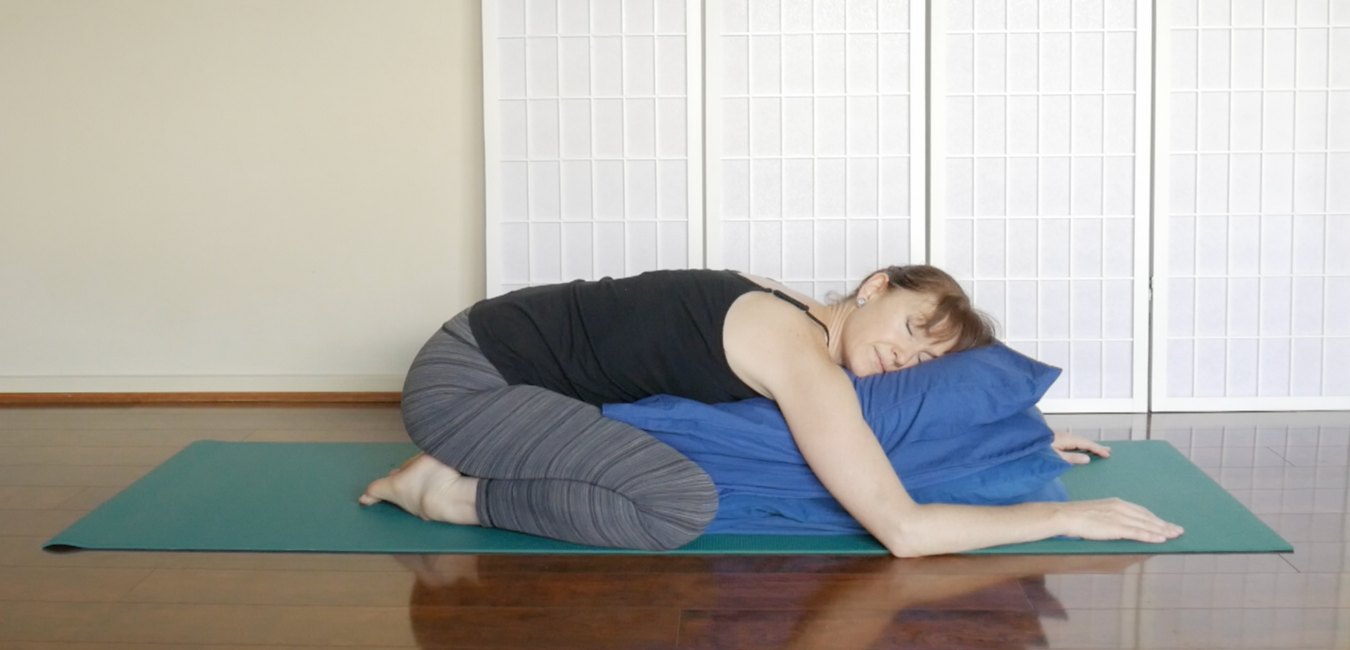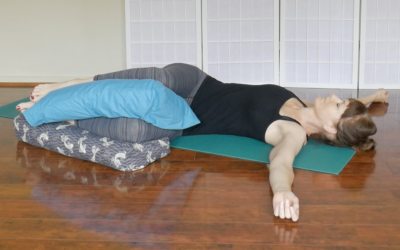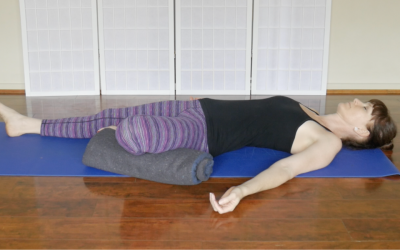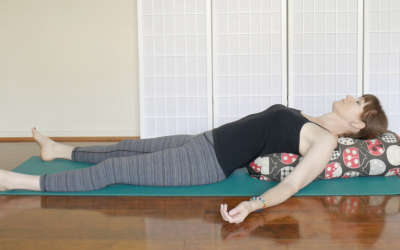Find Your Pose
Supported Child’s Pose
Salamba Balasana
(salamba ‘supported’ + bala ‘child’ + asana ‘pose’)
Supported Child’s Pose is a wonderful pose for quieting a busy mind, easing tension in the lower back, and turning inward. This makes it an ideal pose for unwinding at the end of the day, especially before bed. In fact, it can be a great pose to try if you’re struggling to sleep. If you’ve done even a little yoga, you will likely be familiar with Balasana ‘child’s pose’, the unsupported variation of this pose. Although Child’s Pose is a common warm-up, transition, and resting pose in yoga sequences, it is a surprisingly difficult pose for many practitioners to access or find restful. Taking a restorative variation, with as many props as you need (more is better in the world of Restorative yoga), makes the pose far more accessible and comfortable, allowing you to enjoy all the benefits it has to offer. Even if you find unsupported Child’s Pose comfortable, laying forward over a bolster or pillow nest of can feel incredibly soothing and increase the sense of security and grounding this pose offers.
* Always consult with your doctor before beginning any yoga practice.
Benefits:
• Gently stretches and releases tension in the spine, lower back, hips, thighs and ankles.
• Can reduce shoulder tension.
• Calms a busy mind and facilitates sleep.
• Soothes the central nervous system, which may help stress, anxiety, and fatigue.
• The pressure against the front of the body gently massages the abdominal organs.
• Can be helpful in easing menstrual discomfort and symptoms of menopause.
Cautions & contraindications:
• Avoid if you have a current or recent knee or ankle injury.
• Avoid if you experience chronic back pain from spondylolisthesis, spondylolysis, spinal stenosis, disc disease, or if you are experience nerve symptoms (such as radiating pain, or bladder or bowel difficulties).
• Avoid turning your head if you have chronic neck issues.
• If you’re pregnant, take caution to create space for your growing baby and belly after the first trimester (see below for how to do this).
Step-by-step (the basic set-up):
• Set up your props. Place a bolster or stack of pillows (my preference) lengthwise on your yoga mat.
• Kneel, facing the end of your bolster, with big toes touching and your knees open as wide as feels comfortable. Draw the bolster or pillow stack in towards your hips so that you can drape your chest and abdomen forward over it. You should feel supported and not collapsed, so readjust the positioning of your props, and try a few variations from below, until you experience this.
• Turn your head to one side, resting your ear on the bolster, and position your arms either on the bolster, or on the floor alongside it. If turning your head is not comfortable for the neck, keep your head straight and stack your hands under the forehead. Ensure your shoulders are soft and your neck is long and not compressed.
• Relax into the bolster or pillows. Close your eyes, if you like, and relax the jaw.
• If your head is turned, turn it to look the opposite way half way through holding the pose.
• When you are ready, mindfully release from the pose. Start by turning your head to centre. Then use your arms to help gently guide your torso away from the bolster to an upright position. Pause here for a few breaths and feel the effects of the pose.

Supported Child's pose arm variation 1
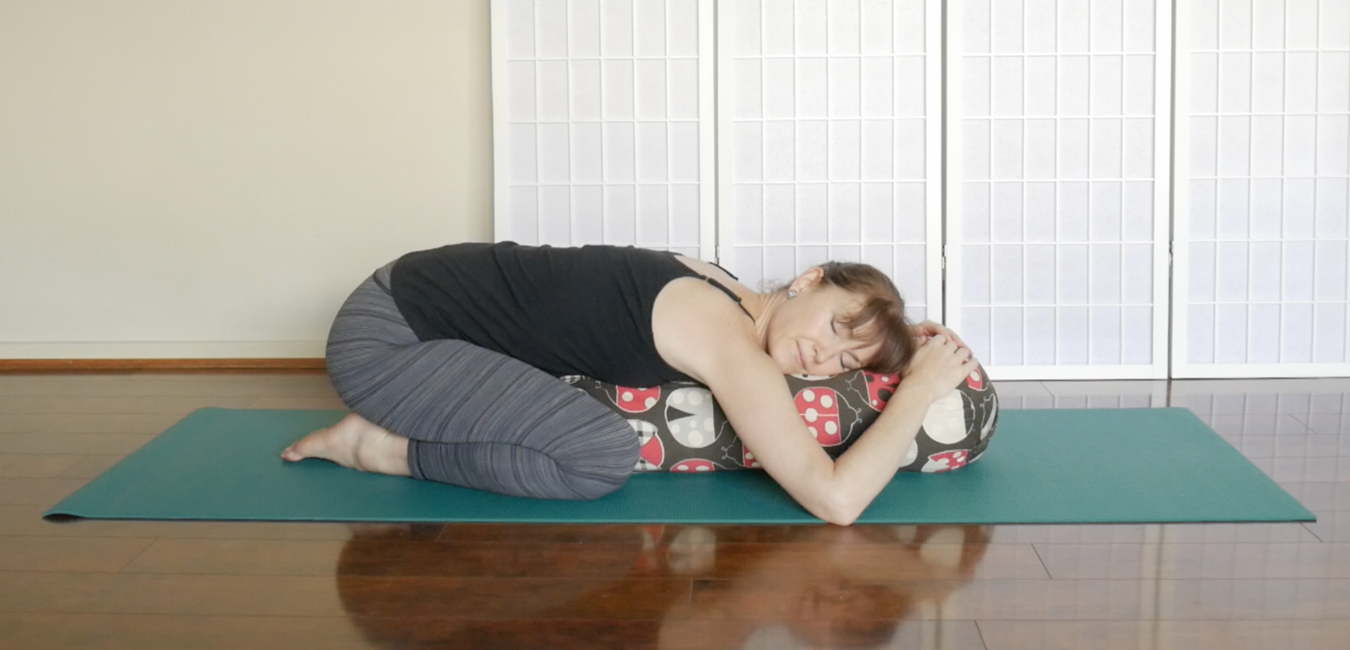
Supported child's pose arm variation 2
Find your pose (props, modifications & variations):
Below are some variations and different ways to use props in supported fish pose – with images. Your body is unique and only you can feel how each variation feels for you. Choose the one that feels best for you, and the one that works with the props you have available. And if you need more ideas, feel free to reach out.
• If you don’t have a bolster: Use a stack of pillows, instead. In fact, you might prefer this option, even if you do have a bolster.
• Variation with bolster on an incline: Elevate the end of the bolster furthest away from you. You can do this by using two yoga blocks set to two different heights (middle and high), or by stacking some pillows, folded blankets, or couch cushions beneath one end of the bolster. Set the incline as high as feels comfortable, and make sure the set-up is stable and secure before relaxing into the pose. Add some blocks or pillows underneath the arms to raise the floor under them, too.
• Variation with arms under the bolster: This is a great option if your shoulders are uncomfortable. Place one yoga block under each end of the bolster. This creates space to wrap your arms underneath the bolster, which can be a more restful position for the shoulders.

how to incline your bolster
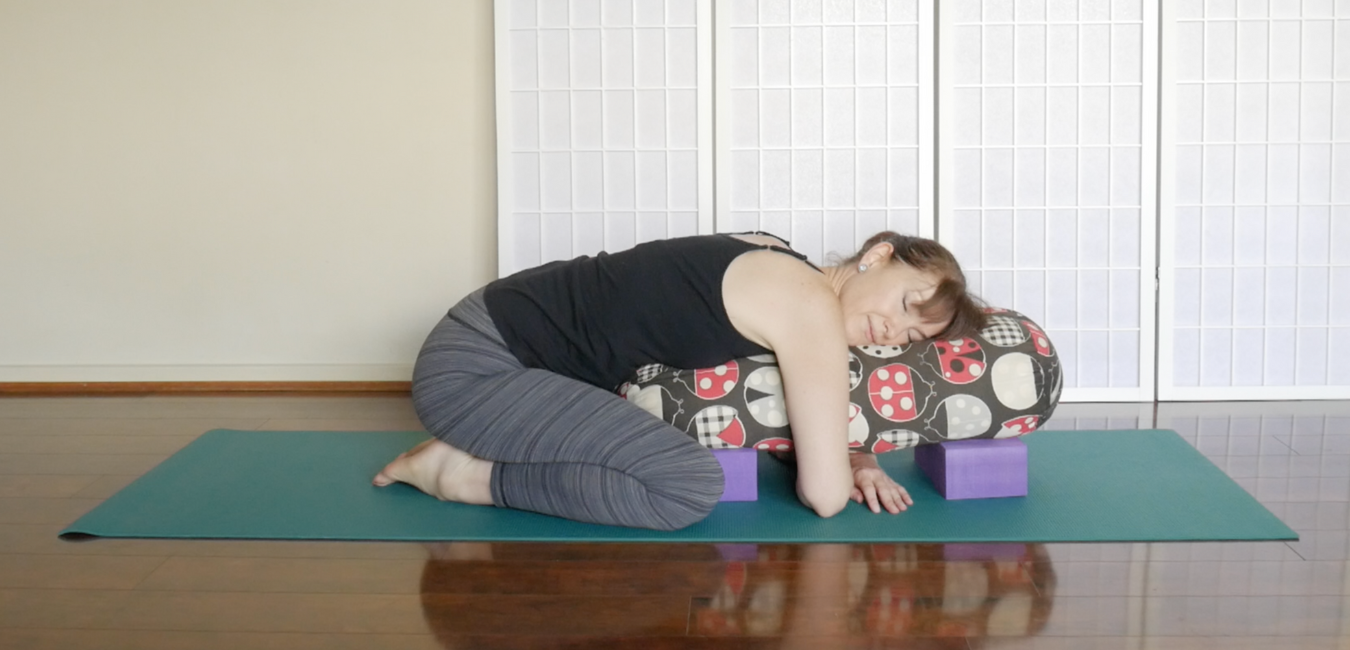
variation with arms under bolster
• Variation on your back: Lie on your back. Draw the knees toward your armpits, and wrap your hands or arms anywhere around the legs that feels comfortable. This is a good option for anyone struggling to find comfort in the basic set-up, especially after trying some of the below modifications.
• If your elbows are floating: Place a yoga block, pillow or folded blanket or towel under each arm for support.
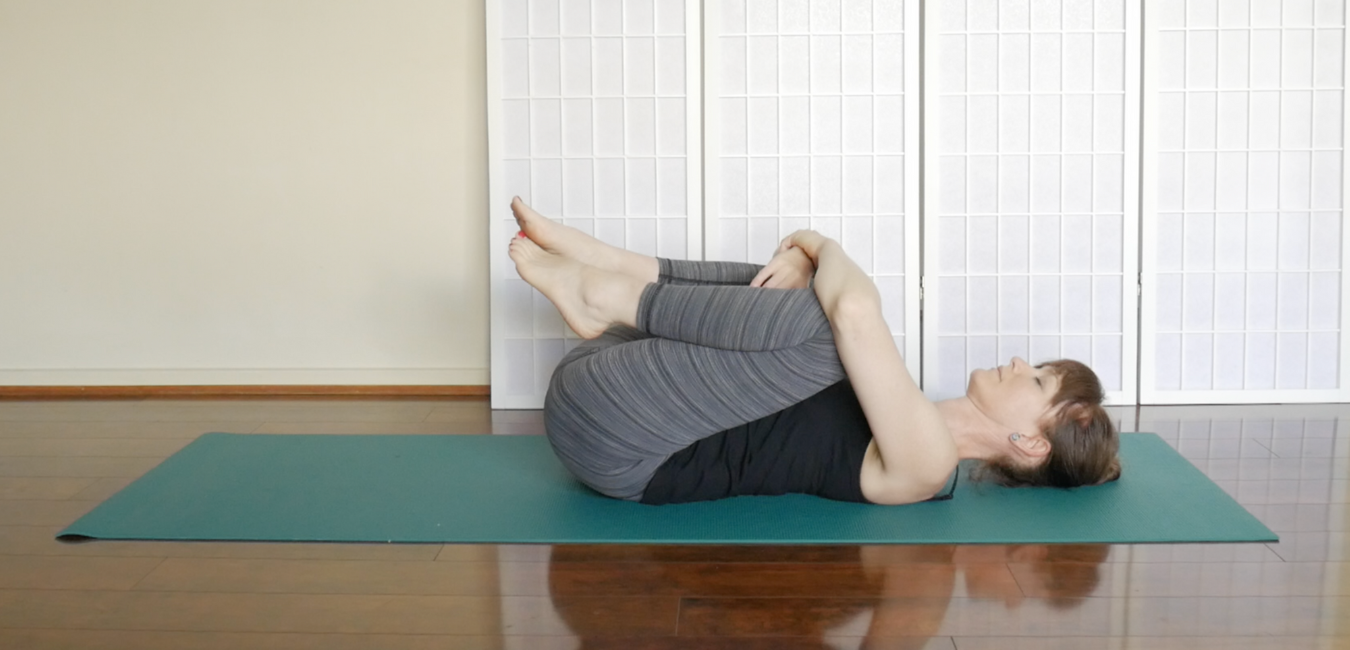
child's pose on your back

VARIATION WITH SUPPORT UNDER ARMS
• If your head feels like it’s dropping down: Lay one or more pillows or folded blankets under your head.
• If you have neck issues, it’s uncomfortable to turn your head, you have abundance at the centre of your body, you’re pregnant, or you have a headache: Lay a bolster or some firm cushions horizontal in front of you and rest your forehead and your hands on top of it.
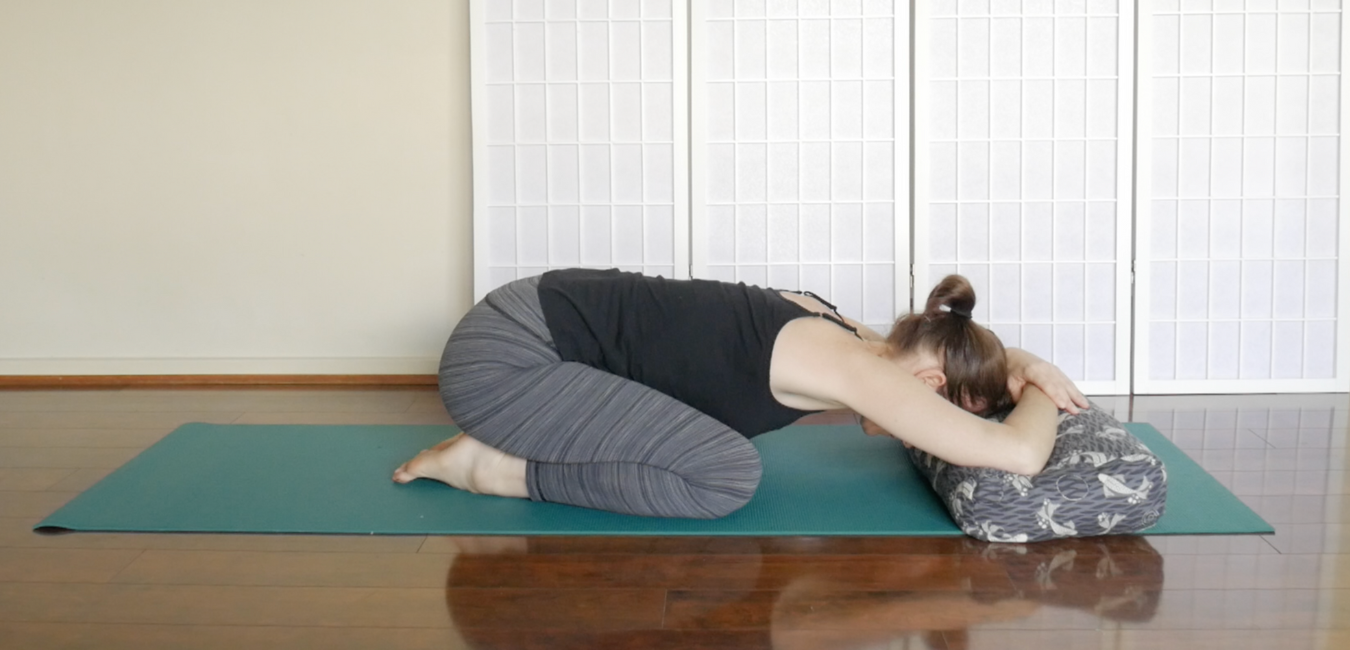
variation with forehead and arms on bolster

variation with forehead on pillow stack
• If kneeling on the mat is uncomfortable: Place a folded blanket or towel under the knees. You can also place a blanket under the feet if they’re uncomfortable.
• If your hips are floating and not settled on your heels: Place a rolled or folded blanket or towel between the hips and the heels. You can also use pillows or cushions. This can also help in some instances if the shoulders are uncomfortable.

variation with blanket under knees
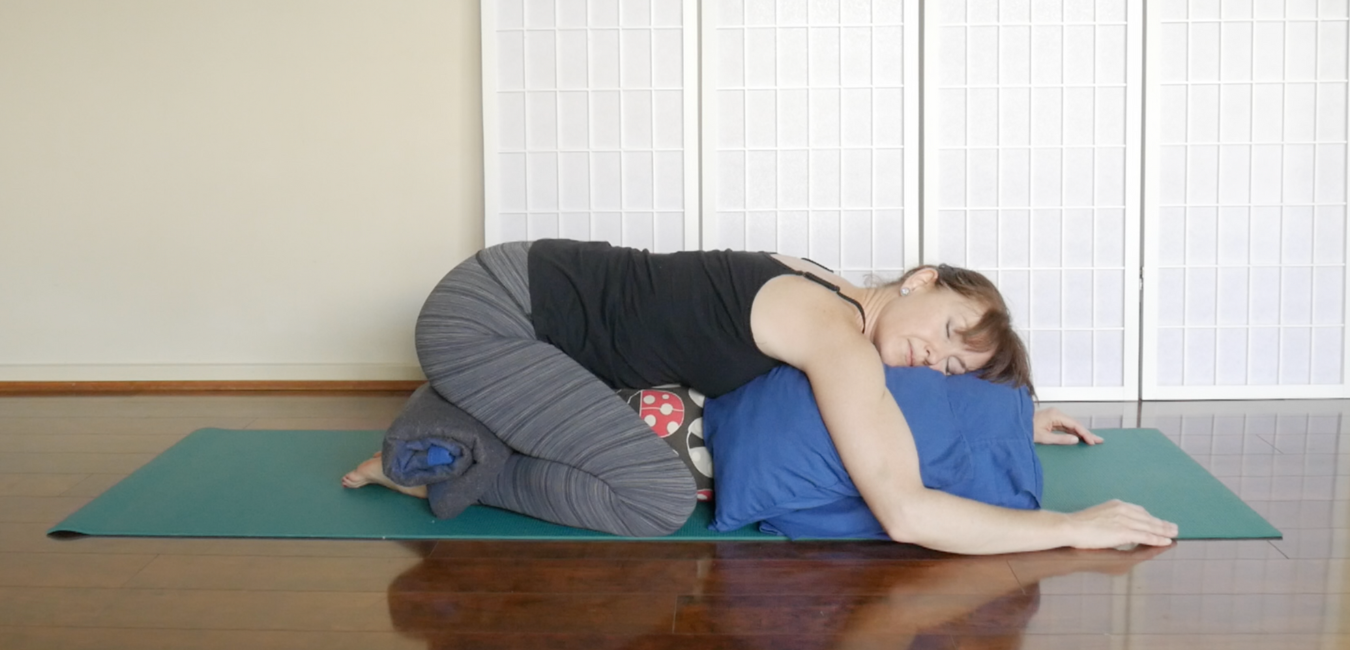
variation with rolled blanket under hips
• Kneeling variation: Kneel on a folded blanket with a bench or two seats positioned side-by-side in front of you. Fold your torso forward over the seat. You may like to use pillows to make a nest. Adjust the height of the pillows so that your spine is in neutral and not rounding. A good option if the muscles in the thighs are too tight to lower the hips comfortably.
• Standing variation: This is a great option if getting down to the floor is challenging. Stand facing a dining table, desk or kitchen counter and fold the torso forward. You may like to use pillows to make a nest. If your spine is rounding, add pillows. Be sure to keep a micro-bend in the knees so that they don’t lock.
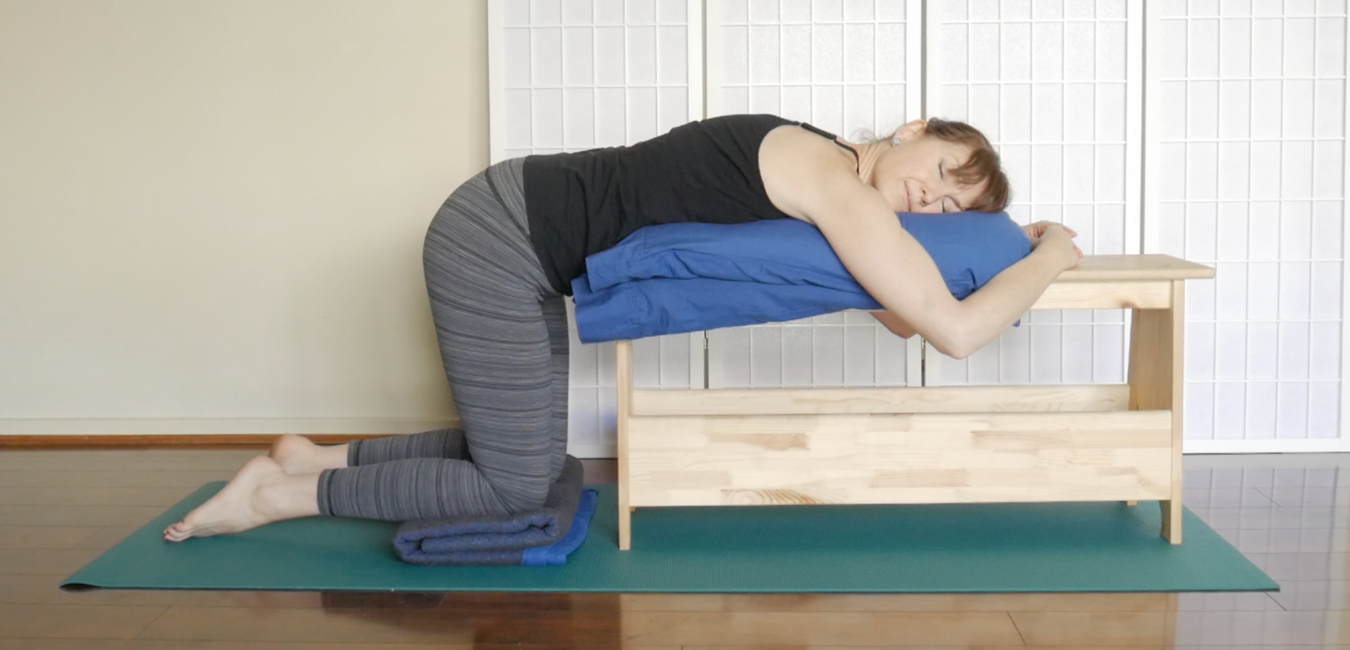
Kneeling variation on a bench
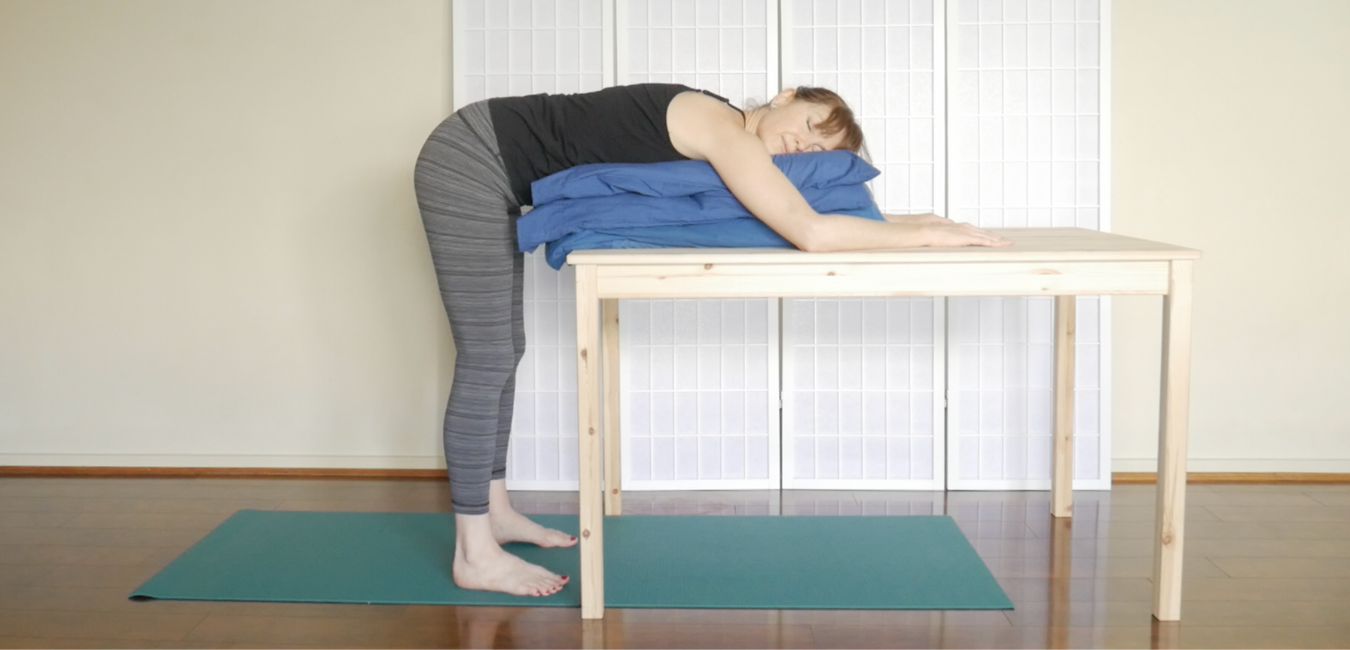
Standing variation at a table
• Seated variation: Another great option if getting on and off the floor or kneeling is challenging. Sit on one chair with your bolster or pillow stack in another chair in front of you. Fold forward with the torso.
• For extra comfort: Covering yourself with a blanket both keeps you warm and offers a sense of security. It can offer a cocoon like experience in this pose. A weighted folded wool blanket or sandbag across the sacrum at the back of the pelvis can offer additional relaxation.
How long to hold for:
Anywhere from 5-20 minutes. You can slowly build up.
Remember, if you turn your head to one side, make sure to turn it the other way halfway through so the cervical spine enjoys the same amount of stretch each way.
Give the pose a try and, if you’d like to share your experience or ask a question about how best to modify the pose for your body, send me a message. I’d love to hear from you!
More Poses to Explore…
Supported Reclined Twist
Find Your PoseSupported Reclined Twist Supta Matsyendrasana 'reclined lord of...
Reclined Tree Pose
Find Your PoseReclined Tree Pose Supta Vrksasana(supta 'reclined' or...
Supported Fish Pose
Supported Fish Pose is without a doubt my favourite bedtime restorative pose, and my preferred variation as both practitioner and teacher.
Join the Mindful Mornings Challenge
Are you ready to invite a little more presence, calm, and connection into even your busiest days? Download your free PDF challenge guide.
